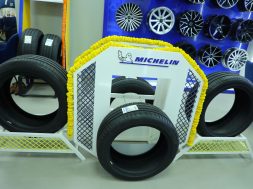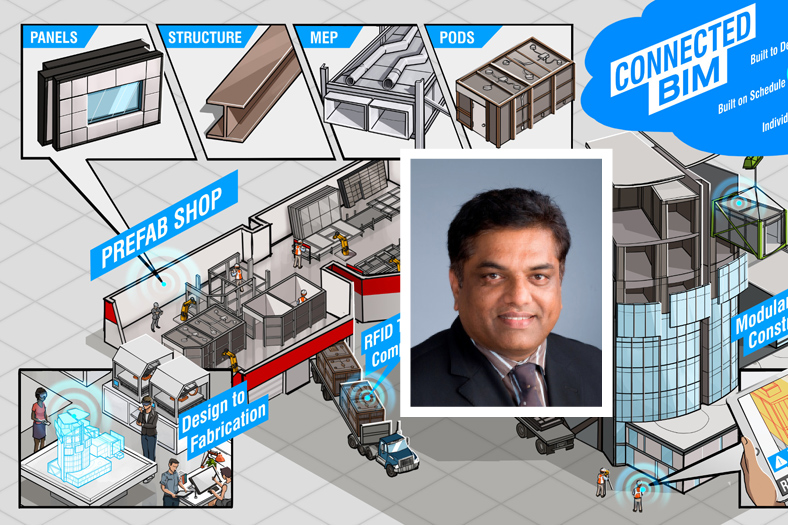Employee Productivity & The Smart Building

“Employees have to be at the heart of how a building operates, and a healthy, productive workplace is one that is consistently monitored, managed and controlled.”
Every day we talk with facility heads and facility managers from different companies. We talk about their plans and aspirations for their facilities. We talk about bottlenecks in achieving these goals and the possible resolutions. We talk about making the shift from investment-laden facility management to contributing to the company’s bottom line.
One topic that comes up over and over again with most of these facility managers is ‘building a work environment that makes employees productive and healthy’.
As Mahesh Ramanujam, President and Chief Executive Officer, U.S. Green Building Council, aptly summarised at the Green Building Conference in Beijing, “There is no deep mystery about how to create healthier spaces. But it does require diligence and attention to detail: the key components of healthy space have everything to do with creating space not for itself, but for people.” We couldn’t agree more! Employees have to be at the heart of how a building operates, and a healthy, productive workplace is one that is consistently monitored, managed and controlled.
A healthy office environment has many dimensions; from the ever-changing environment-based attributes such as good indoor air quality, thermal comfort, lighting and sound to static attributes such as high-quality views, location and amenities. Studies show that each of these aspects significantly impacts employee health, cognitive abilities, problem-solving capabilities, concentration, and ability to innovate. E.g. as US Green Building Council points out, “Studies show that small changes such as improved ventilation will boost the productivity of workers by 11 per cent while better lighting will spark a whopping 23 per cent jump in efficiency.”
But how does today’s already-stretched, short-on-resources facility manager keep track of so many resources? How does he/she ensure that each aspect of the facility is continuously monitored, managed, and controlled?
Smart Systems that impact Work Output
Enter Smart Workplaces. A smart workplace can optimise all the various dimensions of the workplace keeping the employee at the heart of the strategy. Smart workplaces take the benefits of IoT to a whole new level, providing and consuming information efficiently.
Take for instance how 75F’s Building Intelligence System uses IoT and smart algorithms in the cloud to not only monitor energy consumption but uses the input from these sensors to proactively adjust HVAC and lighting settings for maximum employee efficiency and increased energy savings. Sensors detect which part of the building gets the most amount of sunlight in real time and directs the HVAC system to improve the cooling in those areas. Similar sensors can tell if a room is filled or if it is unoccupied. Based on these inputs, the system can decide which areas need more or less cooling.
Using existing HVAC machines and conduits, 75F’s system can be layered on top to optimize maximum efficiency. Sensors placed in and around the building can plug into weather forecasts and real-time scenarios to send feedback to the system about which areas require more or less cooling due to external conditions.
75F’s system learns your building within a week, and proactively knows when lights should come on or when to heat the building, or merely a part of it.
The Boost in Employee Productivity
It’s a well-accepted fact that a healthy, happy workforce is a crucial component of a productive, successful business. With 90 per cent of a business’ operating expenses typically assigned to employee costs (including salaries and benefits), it follows that a modest difference in employee health and productivity can have significant financial implications for the business.
Thermal Comfort & Productivity
Did you know nearly 80 per cent of the employees complain about temperatures at their workplace and approximately 29 per cent have confessed to taking longer breaks just to escape uncomfortable temperatures? As per a recent study, if your office is too cold, your employee output comes down by nearly 50 per cent and if your office is too warm, the attendance drops by 18 per cent and project turnaround times increase by 13 per cent.
The situation is no better if your office is too warm either. Take a look at the Thermostat Wars infographics to know how and how much your employees’ productivity is being hampered by imbalanced temperatures in your office.
Optimal Lighting for Happy Employees
Studies have shown that lighting has a huge impact on circadian rhythms, which is why your employees might not be as efficient as you’d like. A slight tweak in your workplace’s lighting and getting it to coordinate with the day part could reduce drowsiness, improve an employee’s ability to focus, improve the mood of the workplace and most importantly improve employee concentration by nearly 37 per cent.
Office lighting impacts more that your employees’ concentration levels. Absenteeism, employee fatigue and work performance are affected too in addition to your facility’s energy bills. The Efficient Lighting for workplaces infographic details the impact of lighting on employee productivity.
The cost of improved air quality
Air is a basic human need, but it’s really the quality of air that is vital. It’s common knowledge that poorly ventilated offices could be causing your employees to be sluggish, unproductive and sick. In other words, poor air quality could be diminishing your business’ bottom line!
Authored by:
Gaurav Burman,
VP & Country President,
India, 75F
23
Cookie Consent
We use cookies to personalize your experience. By continuing to visit this website you agree to our Terms & Conditions, Privacy Policy and Cookie Policy.









